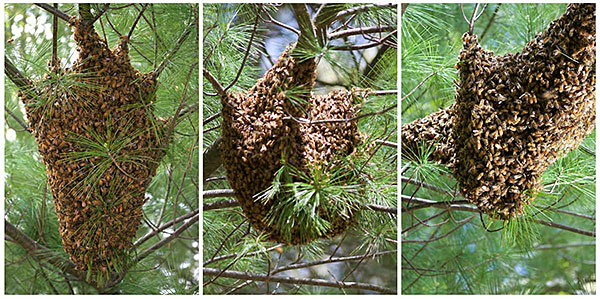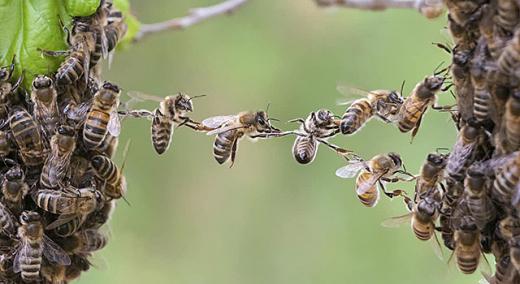Gathered inside a small shed in the midst of a peaceful meadow, my colleagues and I are about to flip the switch to start a seemingly mundane procedure: using a motor to shake a wooden board. But underneath this board, we have a swarm of roughly 10,000 honeybees, clinging to each other in a single magnificent pulsing cone.
|
ADVERTISEMENT |
As we share one last look of excited concern, the swarm, literally a chunk of living material, starts to move right and left, jiggling like jelly.
Who in their right minds would shake a honeybee swarm? My colleagues and I are studying swarms to deepen our understanding of these essential pollinators, and also to see how we can leverage that understanding in the world of robotics materials.

Honeybee swarms adapt to different branch shapes. Credit: Orit Peleg and Jacob Peters
…

Add new comment